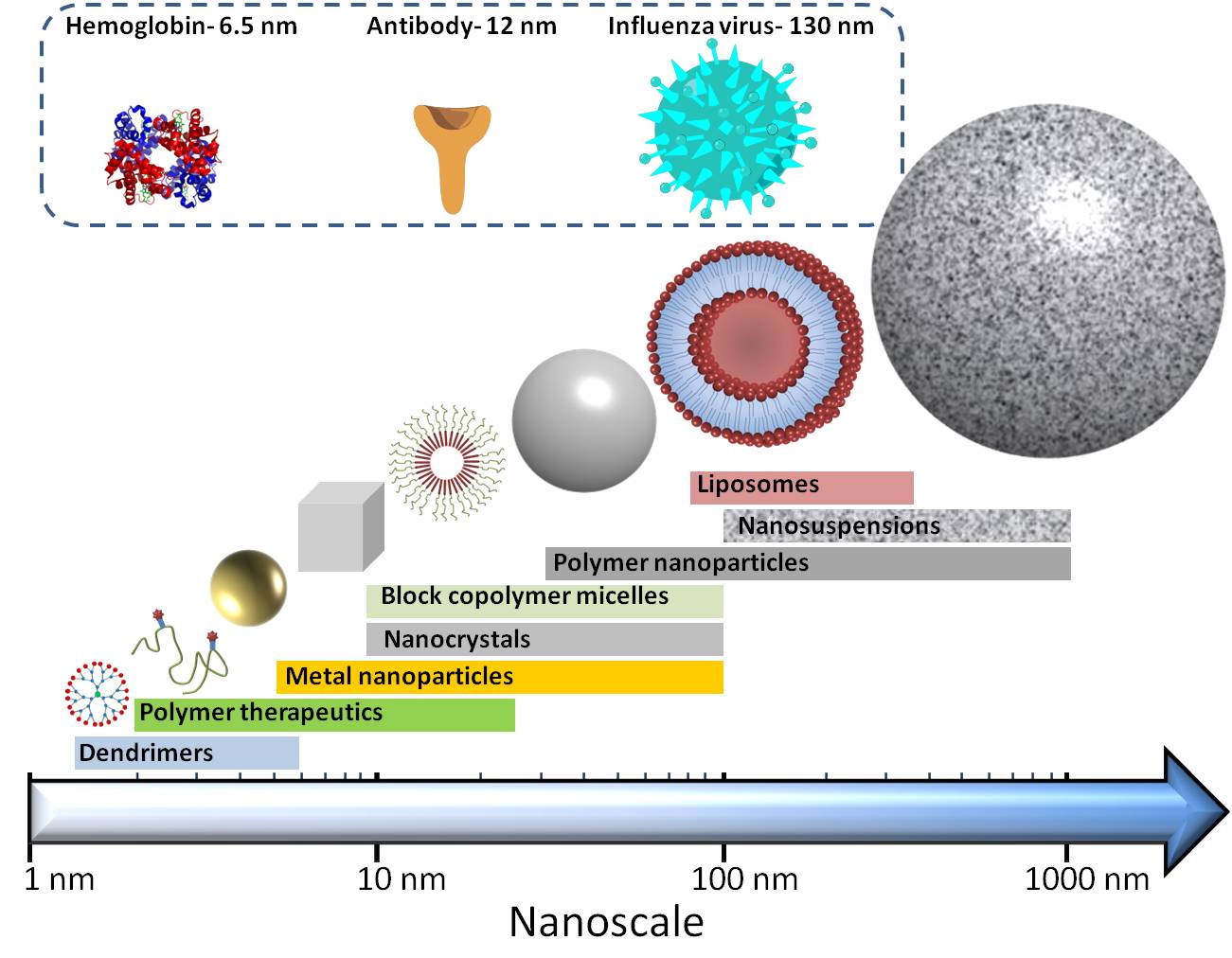What is nanotechnology and what is nanomedicine?
Nanotechnology has many definitions but in general it is the use and application of materials with sizes in the nanometre range. Just as a millimetre is one-thousandth of a metre, a nanometre is one-millionth of a millimetre. In more understandable terms, a human hair is approximately 80,000 nanometres in diameter and the growing science and industry of nanotechnology utilises materials below 1000 nanometres. Benefits of working at this very small scale have been seen for many years over such diverse areas as electronics and energy storage to sunscreens and food packaging.
Nanomedicine is simply the application of nanotechnologies in a healthcare setting and the majority of benefits that have already been seen involve the use of nanoparticles to improve the behaviour of drug substances. Today, nanomedicines are used globally to improve the treatments and lives of patients suffering from a range of disorders including ovarian and breast cancer, kidney disease, fungal infections, elevated cholesterol, menopausal symptoms, multiple sclerosis, chronic pain, asthma and emphysema. The nanomedicines that are currently available are overcoming some of the difficulties experienced by normal medical approaches in delivering the benefit from the drug molecules used. In some cases the drugs have very little solubility in water and the human body struggles to absorb enough to treat the condition. In other cases, the drug molecule is absorbed well but the body removes the drug before it has had long enough to provide a benefit. Drugs may lead to side-effects due to poor delivery at the actual site of disease. For example, drugs that are targeting cancers must avoid healthy tissues and organs or damage can be caused. Nanomedicines therefore can play an important role in ensuring enough of the drug enters the body, that drug that does enter stays in the body for long periods and is targeted specifically to the areas that need treatment.
It has been known for many years that identifying illness or disease very early can help prevent long term damage or even death in patients. It is possible for many diseases that no symptoms are visible for many years but the human body does produce evidence of problems at the molecular level. Another important area of nanotechnology and nanomedicine is diagnostics. By studying and identifying individual molecules, it is possible to diagnose disease in time to improve the prognosis for the patient.
Over the coming years, the benefits of nanomedicines and new diagnostic tools will be felt by an increasing number of patients with considerable impact on global health.

This illustrative figure shows the different structures of nanomedicines and their approximate sizes. For comparison, the sizes of biological nanostructures are shown at the top of the figure.
